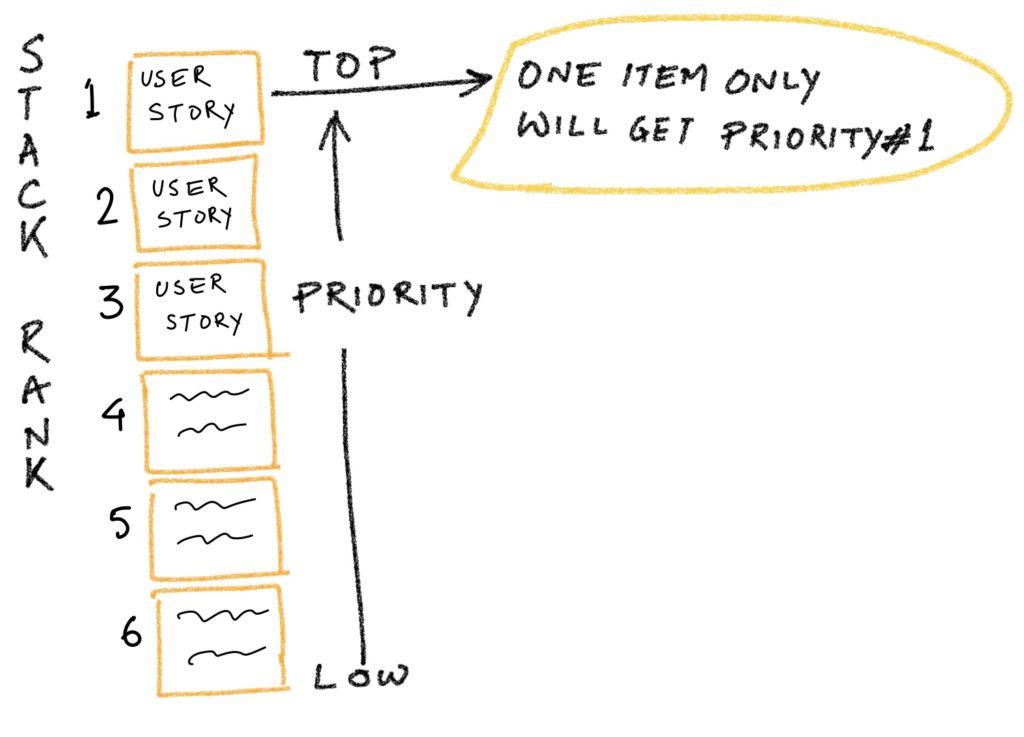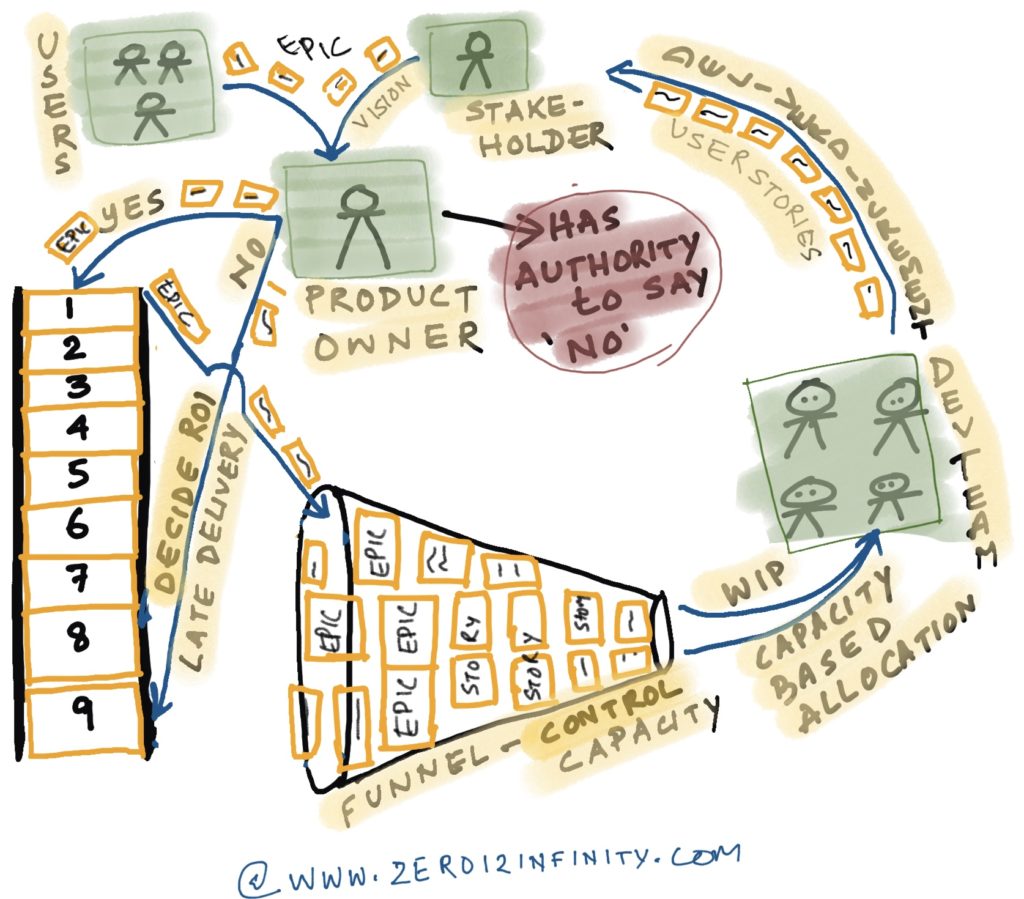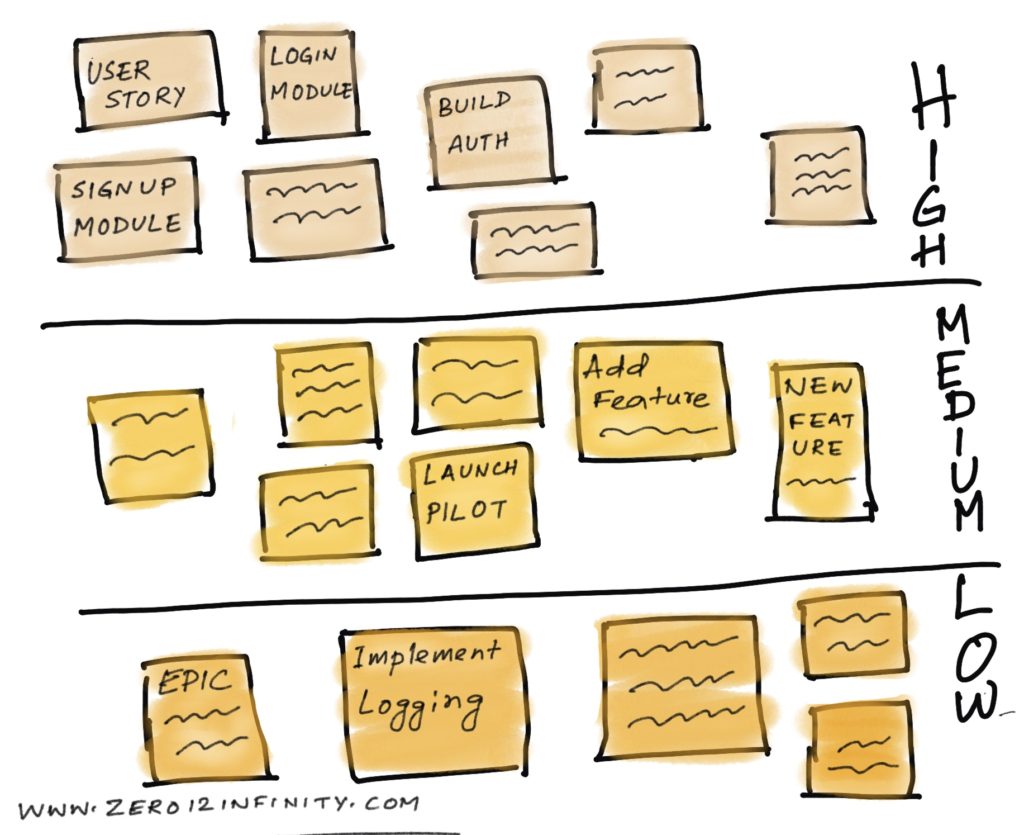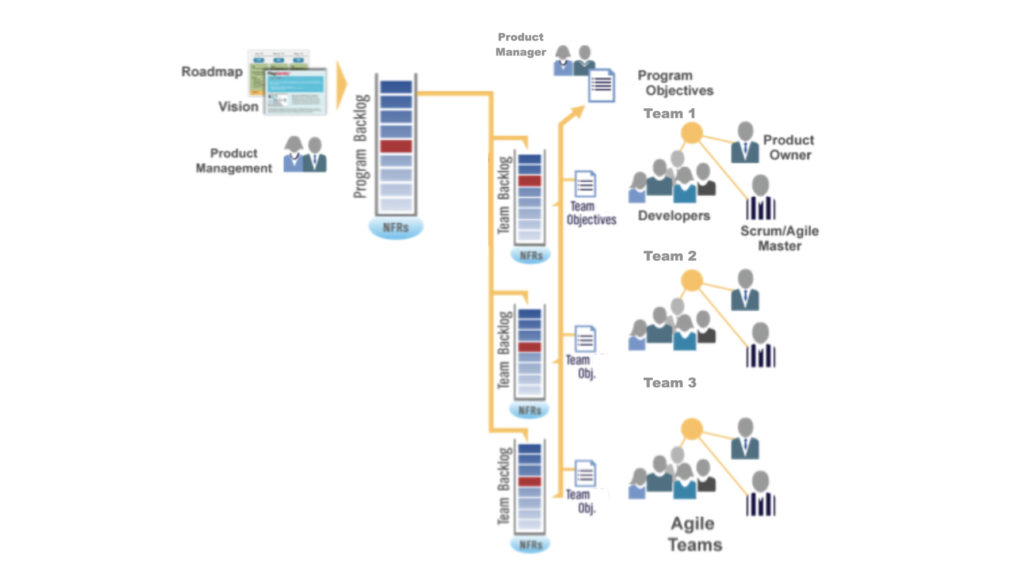Importance of the Healthy Product Backlog and Product Owner Role
Product Backlog (PB) management is critical for successful, agile implementation. A healthy PB helps better product delivery, better agility, team satisfaction, and happy customer. You may wonder how are all these links with the healthy PB and the role of the Product Owner (PO) 1. Let me explain my thoughts and I hope it will add value to your role and your current organization!
Product Backlog in agile is a list of prioritized product features written in user stories2 format and teams’ ultimate to-do list from top to bottom iterative and incrementally. A well-organized PB is a key for successful iteration planning, development, and continuous delivery.

Fig 1 – Stacked Product Backlog
Now imagine that stakeholders such as executive sponsors, users, customers, and field employees are constantly sending tons of feature requests that are needed right NOW. If the product owner can’t manage the PB effectively, then easily and soon the PB will be unmanageable. So, a poor PB will easily break the delivery flow, poor deliverable quality, and inject technical debt. It will create an imbalance between the influx of requests and the outflux that teams can deliver gracefully within their capacity.
Therefore, the PO has to play the gatekeeper to keep PB healthy and maintain priority in such a way that it will always ensure ROI. The PO has to manage the PB priority in the right order by saying “NO” to put the same priority on all features and making a flat PB.
The most important concept of funneling through the PB items for agile teams (a reference to Fig 2). Agile teams always pull the top priority items from the top of the PB based on their capacity. The Scrum Master here plays a key role to protect teams and keeps a smooth flow.

Fig 2 – Prioritization & Funneling
Backlog with High, Medium, and Low Priority PBIs
Let’s imagine you as a PO managing 20 HIGH, 40 Medium, and 100 LOW features in your PB. Your agile team can pull one item, but the HIGH bucket has 20 plus unranked PBIs so, which one to pull? Obviously, the agile team will be puzzled and frustrated if they need to choose one over another from many of the same priority items (refer to Fig#3 below). This is not an effective way of managing PBL and prioritization.

Fig 3: Broken Backlog
Stack Ranked Backlog
Stack rank PB is the best way to manage the prioritization of all items. Then each item will be ranked with numbers 1 to n and only one item will get priority 1. This also clearly answers the agile teams’ question of which one to pull next if capacity permits.
Well, this never means to compromise needed collaboration and direct communication. Rather, this stacked ranked PB will help better collaboration and clear vision in terms of product features.
Therefore, poor and ambiguous PB forced the agile teams to deliver poor quality and real hindrance of the delivery flow. Further, make them frustrated and demotivated with huge technical debts.
Program Backlog linked to multiple Teams’ Backlog…
Multiple backlogs for a single product surely create confusion, prioritization inefficiency, and lead to silos. Imagine the stacked ranked as explained above. If you have multiple backlogs for the same product, then obviously you’ll be dealing with multiple identical priorities that lead to miscommunication and unhealthy priorities that affect the effectiveness. So, Scrum is defined clearly as – One Product, One Backlog ensures always one item will be the topmost priority.
How do you manage PB for a big product with many teams working for the same product? Simply you will have one Program Backlog and all Agile Teams to create their own team backlog by pulling items from the program backlog (refer to. below image).

Fig 4 – Teams’ Backlog linked with Program Backlog
All team-level backlogs will roll up into One Program Backlog maintaining top to bottom stack ranking, similarly, teams’ objectives roll up into program objectives as well.
Wrapping up …
Managing a healthy PB is key for successful product management and development. It maintains and ensures flow for continuous delivery with built-in quality.
But poorly managed PB will break the flow and push the agile team to deliver poor quality and technical debts. The PO role is extremely critical to constantly building and managing the PB, but never pushes PBI to the agile teams. Remember, agile teams always implement PBI at their own pace.
Always remember one product should have only one program backlog! Happy Reading & leave your comment 🙂